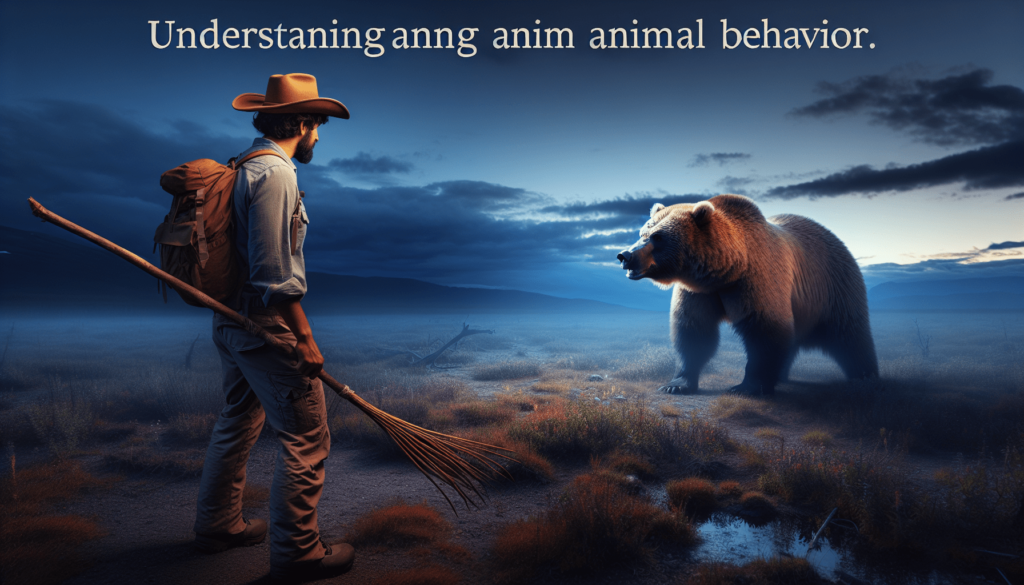Are you a nature enthusiast or someone who simply wants to be prepared for any adventure? If so, then it’s imperative that you equip yourself with wilderness survival skills, especially when it comes to defending against animal attacks. In my blog, “The Survivalist Handbook,” I aim to provide you with the necessary knowledge and techniques to not only survive but thrive in any wilderness environment. Within the “Wilderness Survival” category, you’ll discover a wealth of articles covering essential skills, specific threats, and scenarios. So, get ready to become a master of the wilds and learn how to outsmart predators in order to ensure your safety and enjoy the great outdoors to the fullest.
Understanding Animal Behavior
When venturing into the wilderness, it is important to have a good understanding of animal behavior. This knowledge can help you identify signs of aggression and recognize defensive postures, allowing you to take appropriate action to avoid any dangerous encounters. Additionally, understanding territorial behavior can help you navigate animal habitats safely and reduce the chances of conflict.
Common Predator Species
In order to effectively prepare for an encounter with a predator, it is important to familiarize yourself with the common predator species in the area you will be exploring. Bears, wolves, mountain lions, and coyotes are all examples of predators that you may come across in the wild. Understanding their behaviors, preferences, and tendencies will significantly enhance your chances of avoiding conflict and staying safe.

Preparing for an Encounter
Before heading out into the wilderness, it is crucial to research the area and familiarize yourself with its wildlife. This will give you valuable insight into the types of animals you may encounter and help you create a plan with your group. Discussing potential scenarios and developing strategies to mitigate risks will ensure that everyone is prepared and knows what to do in the event of an encounter. Additionally, carrying bear spray or deterrents can provide an extra layer of protection and peace of mind.
Creating a Safe Campsite
When setting up a campsite in the wilderness, it is essential to select a suitable location that minimizes the risk of attracting predators. Look for open areas with good visibility and keep a safe distance from areas that may be frequented by animals. Proper food storage techniques, such as using bear-resistant containers or hanging food in a bear bag, will help prevent attracting wildlife to your campsite. Additionally, setting up tripwires or deterrent devices can act as an early warning system, alerting you to the presence of animals and giving you time to take necessary precautions.

Hiking and Traveling Tips
When hiking or traveling in the wilderness, there are several tips that can reduce the chances of an animal encounter. Making noise as you move through the terrain can alert animals to your presence and give them an opportunity to move away. Additionally, staying in a group can increase safety as predators are less likely to approach a larger group. It is also important to familiarize yourself with known animal habitats and avoid those areas whenever possible to minimize the likelihood of an encounter.
Dealing with Bear Encounters
If you encounter a bear in the wild, it is important to identify the species before taking any action. Different bears may have different response strategies, so knowing how to differentiate between black bears and grizzly bears, for example, is crucial. In the event of an encounter, playing dead is often the recommended response for grizzly bears, while fighting back is usually more appropriate for black bears. Carrying and knowing how to effectively use bear spray can also provide a valuable means of defense.
Handling Wolf and Coyote Encounters
When encountering wolves or coyotes, maintaining eye contact is important as it shows dominance and can discourage the animals from approaching closer. Slowly backing away without turning your back is generally the best course of action in these situations. Making yourself appear larger by raising your arms or opening your jacket can also help deter these predators. It is important to stay calm and avoid sudden movements that could provoke an aggressive response.
Surviving a Mountain Lion Encounter
Mountain lion encounters are relatively rare, but it is still important to know how to react if you find yourself in such a situation. Avoiding direct eye contact with the mountain lion is recommended, as it may perceive it as a threat. Instead, face the animal while making yourself appear larger by opening your arms or raising your hiking poles above your head. If the mountain lion approaches, maintaining your ground and even fighting back as a last resort can deter the animal.
Escape and Evasion Techniques
If you find yourself in a dangerous situation with a predator and need to escape or evade it, there are several techniques that can help. Finding high ground or climbing a tree can create distance and make it difficult for the animal to reach you. Using improvised weapons such as sticks or rocks can help you defend yourself if necessary. Understanding the pursuit tactics of different species can also be helpful in outsmarting predators and increasing your chances of escaping unharmed.
First Aid for Animal Attacks
In the unfortunate event of an animal attack, knowing how to administer first aid is crucial for minimizing further injury and increasing the chances of survival. Treating wounds and stopping any bleeding should be a priority. Understanding the risks of infection and having the necessary supplies, such as antiseptics and bandages, can help prevent complications. In some cases, knowing how to perform CPR or rescue breathing may be necessary to revive a person who has been severely injured in an animal attack.
By understanding and taking the necessary precautions, you can minimize the risk of encountering dangerous predators in the wilderness. Being prepared and knowing how to react in different situations will significantly increase your chances of staying safe during outdoor adventures. Remember to always respect wildlife and their habitats, and enjoy the beauty of nature responsibly. Stay safe and happy exploring!

